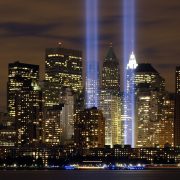The Effects of Light Pollution on Urban Birds
Tis the season for bird migrations in the Northern Hemisphere. You might see more northern birds flying through your neighborhoods and less of your regular local aviary. This is a perfect time to look into bird-finding tips, utilize your Smart Search on Birdseye so you can better identify these new-to-you species, and explore their migrating patterns.
However, each year the migration of birds is hindered by our growing metropolitan areas. Not only is habitat loss a serious issue to the health and nesting of birds, but light pollution is also becoming an issue. Light pollution is defined as the artificial light produced in cities and houses that brighten the dark night to the point of drowning out the stars, throwing off our human circadian rhythm (the mental clock that helps us sleep), and throwing off the migratory pattern of birds.
Most birds migrate during the evening, when the stars can help guide their path. However, as one study discovered, bright lights due to urban light pollution during the nighttime can cause migrating birds to circle and investigate the lit areas, spending more energy without making progress on their journey. This can be damaging to birds that are already expending energy while traveling hundreds of miles every night. Birds were also more likely to collide with light structures, according to the study, and selectively removing light pollution in some cities helped alleviate many of the issues for these migrating species.
However, the strange calling and circling phenomenon was apparent during a September 11th memorial service this year, Tribute in Light: where beams of light were projected into the sky to mimic the Twin Towers of the International Trade Center. These beams of light attracted the birds and, as one researcher noted: “This was a rare opportunity to witness the impact of powerful ground-based lights on nocturnally migrating birds.”
A large group of volunteers was able to record the bird calls, count the number of species present, and utilize technology to better understand the density and movements of the birds present in the area. According to the results of this observed phenomenon:
“…densities of birds over lower Manhattan could reach 60 to 150 times the number that would typically be found in the area at that time. The concentrating effects of the intense light on the birds reached as high as 4 kilometers (2.5 miles). The impact on birds was consistent even on clear nights. (Many previous artificial-light studies focused on nights with poor visibility.) When the light beams were turned off, the birds dispersed within minutes to continue their migrations.”
Unfortunately, these sorts of events aren’t isolated to special spotlights in urban areas. Even in rural towns, bright lights can distract and harm migrating bird species. As our cities and suburban areas expand, the negative impact we have on local species continues to grow.
Luckily, there are some things we can do to help offset some of those negative impacts. It can be as simple as a light switch. Start by turning off any exterior lights on your house, and you can help birds in your area move on with their migrations. Additionally, working alongside your city and local organizations to help create “blackout times” can make your entire neighborhood more nocturnal and bird friendly. This is also known as creating a dark-sky destination for your town.
Making a city into a dark-sky destination can be as simple as utilizing trees to block out neighborhood lights, or placing street lamps with light shields at only important intersections. Two towns in Colorado, the Westcliffe and Silver Cliff neighborhoods, were able to do just that and are now actively fighting against light pollution while saving energy.
Around the globe, urban areas are springing up and growing at a rapid rate. Electricity has becoming a necessity for almost everyone, and light pollution is becoming a real hazard for the environment. In areas where light and electricity are limited or forbidden — such as in the towns in Colorado or even animal sanctuaries like the Galapagos or the Peruvian rainforests — nocturnal animals and migrating birds are able to thrive. If you want to do your part in helping migrating birds this season, simply turn out the lights!
About the author:
Avery T. Phillips is a freelance human being with too much to say. She loves nature and examining human interactions with the world. Comment or tweet her @a_taylorian with any questions or suggestions.



